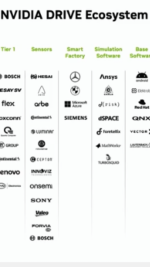DingoBorat
Slim
Yesi agree with this sentiment, ....
DingoBorat said, "Personally, someone like Musk can have the licence for free, if it was my call."
BUT,.....ONLY if it was revealed publicly, or to all of the market. If it were kept secret (and we as shareholders were told to just watch the financials)
it would lose its huge public relations value, which in the case of a Musk endorsement and use in one of his businesses would be extrordinary.
Personally, I would hope for Akida to be in the Tesla Optimus robot. How much would you pay for an Optimus robot if it used Akida technology? The answer is, .... if Brainchip is ever announced to be in an Optimus robot it won't matter,....we shareholders will be able to afford to buy many.
It's fun to dream, isn't it?
Regards, dippY
That's the major reason, that I'd give it to him for free.
On Musk, it looks like a Trump victory in November, will be better for us overall, in my opinion.
Most of the Big Tech heads, seem to be backing him, from Musk, to Zuckerberg.

Elon Musk leads parade of tech titans boosting Trump as the true ‘freedom candidate’
Tech leaders are betting that freedom of speech, freedom to innovate, and freedom from crushing government regulations and confiscatory taxes are more likely in a Trump reign than in a Kamala Harri…
"Trump has expressed his enthusiasm for new technologies, even promising to “make America first in AI.”
Now I know Kamala Harris, has been described as "Electric" but does she have what it takes, to power the A.I. Revolution?..
Please excuse the political context and content, a few different things, have led me down this path of enquiry..




